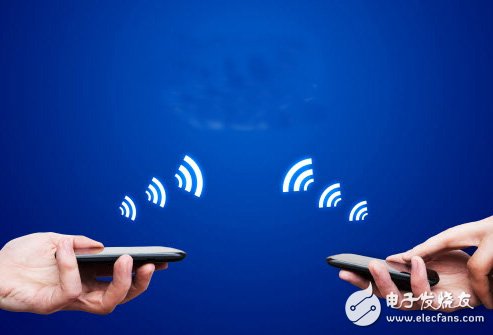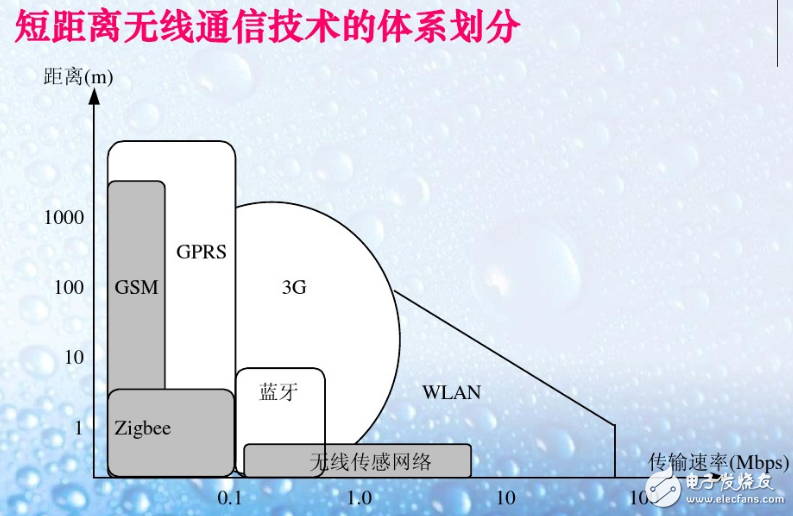Nowadays, products such as smart watches, smart bracelets and smart homes with IoT elements have penetrated into our lives. These devices are all connected devices in the Internet of Things. So what are the close-range networking technologies commonly found in the Internet of Things? What are the characteristics?
The core technology of the Internet of Things is C3SD (control system, computing system, communication system, sensing system and data sea). Technically, the Internet of Things can be divided into three layers: the sensing layer, the communication layer, and the application layer. In the communication layer, these data and information need to be communicated and transmitted securely and reliably. In addition to wired transmission, it is wireless transmission. In wireless transmission systems, short-range wireless transmission technology has become an important branch of the Internet of Things technology.

Wireless communication refers to a communication method that uses information of electromagnetic wave signals to propagate in space, including wireless communication and mobile communication between fixed bodies. In a general sense, as long as the communication transceivers transmit information through radio waves, the single-hop transmission distance is limited to a short range (usually up to several hundred meters), which can be called short-range wireless communication.
The technical features of short-range wireless communication include: 1. The wireless transmission power is on the order of μW to 100mW; 2. The communication distance is several centimeters to several hundred meters; 3. The omnidirectional antenna and the circuit board antenna are used; 4. The application scenario is many, In particular, the shortage of frequency resources; 5, do not need to apply for frequency resource use license; 6, no center, self-organizing network; 7, battery power.

Image from the network
At present, the widely used short-range wireless communication technologies in the Internet of Things include wireless LAN 802.11 (Wi-Fi), Bluetooth (Bluetooth) and infrared data transmission (IrDA). The more potential wireless communication technologies are: ZigBee, NFC, Ultra WideBand, DECT, etc.
The standpoint of each type of short-range wireless communication technology or the special requirements based on speed, distance, and power consumption may also be focused on the expansion of functions, or the economic line is better, then the electronic enthusiasts will be right. The characteristics and applications of these short-range wireless communication technologies are described in detail.
1, Wi-Fi
Wi-Fi is a technology that allows electronic devices to connect to a wireless local area network (WLAN). WIFI stands for Wireless Fidelity, also known as the 802.11 standard, and typically uses the 2.4G UHF or 5G SHF ISM RF band. Connecting to a wireless LAN is usually password protected; but it can also be open, allowing any device within the WLAN range to be connected. Wireless Fidelity is a brand of wireless network communication technology, held by the Wi-Fi Alliance. The goal is to improve interoperability between wireless network products based on the IEEE 802.11 standard.
Advantages and disadvantages of Wi-Fi technology
advantage
(1) Wide coverage of radio waves
The coverage of radio waves is wide. The coverage of radio waves based on Bluetooth technology is very small. The radius is about 50 feet or so, and the radius of Wi-Fi is about 300 feet.
(2) Fast speed and high reliability
The 802.1 lb wireless network specification is a variant of the IEEE 802.1 l network specification with a maximum bandwidth of l1 Mbps. In the case of weak or interfering signals, the bandwidth can be adjusted to 5.5 Mbps, 2 Mbps and 1 Mbps. Adjustments effectively ensure the stability and reliability of the network.
Disadvantages of WiFi technology
Mobile WiFi technology can only be used as a specific mobile WiFi technology. Compared with the wired network, the wireless network is weakened by the distance from the node within the coverage range. The WiFi technology itself ll Mb/ The transmission speed of s may reach an effective rate of 1 M in the hands of the end user because of the increase of the distance, and the wireless signal is easily hindered by the wall of the building, and the obstacles encountered when the radio waves encounter in the propagation process will occur to varying degrees. Refraction, reflection, and diffraction make signal propagation interfere, and radio signals are also susceptible to interference from the same frequency waves and lightning weather.
WiFi networks can use the frequency of wireless networks because they do not need to be explicitly applied, so the network is easily saturated and vulnerable. The security of the WiFi network is not satisfactory. 802.1 1 provides an encryption algorithm called WEP, which encrypts data transmitted wirelessly between a network access point and a host device to prevent unauthorized users from eavesdropping, attacking, and invading the network. However, since WiFi is inherently lacking the protection of the physical structure of the wired network, and it is not necessary to connect to the network before accessing the wired network, if the network is not protected, as long as it is within the signal coverage, only the wireless network card can be accessed by others. Your network, taking up your bandwidth, causes your information to leak.
Wi-Fi technology application
The most promising applications for WLAN in the future will be primarily in SOHO, home wireless networks, and buildings or locations where cable is inconvenient. At present, users of this technology mainly come from public hotspots such as airports, hotels, shopping malls and so on. Wi-Fi technology can integrate Wi-Fi with XML or Java-based Web services, which can significantly reduce the cost of the enterprise. For example, companies choose to have 802.11b access points on every floor or in every department, rather than using cables to connect the entire building. This saves a lot of money for laying cables.
We are saleing Touch screen for Proface,provides the product information.
Touch Screen For Proface are widely used for medical and industrial equipment, research shows, machinery equipment, industrial control, man-machine interface, industrial automation integrated workstation, POS, CNC etc. we have a lot of Touch Screen for Proface, standing some of our inventory stock.
Touch screen for Proface
Touch Screen For Proface,Touch Screen For Proface Replacement,Touch Panel For Proface
GUANGZHOU VICPAS TOUCH TECHNOLOGY CO.,LTD , https://www.touchsuppliers.com